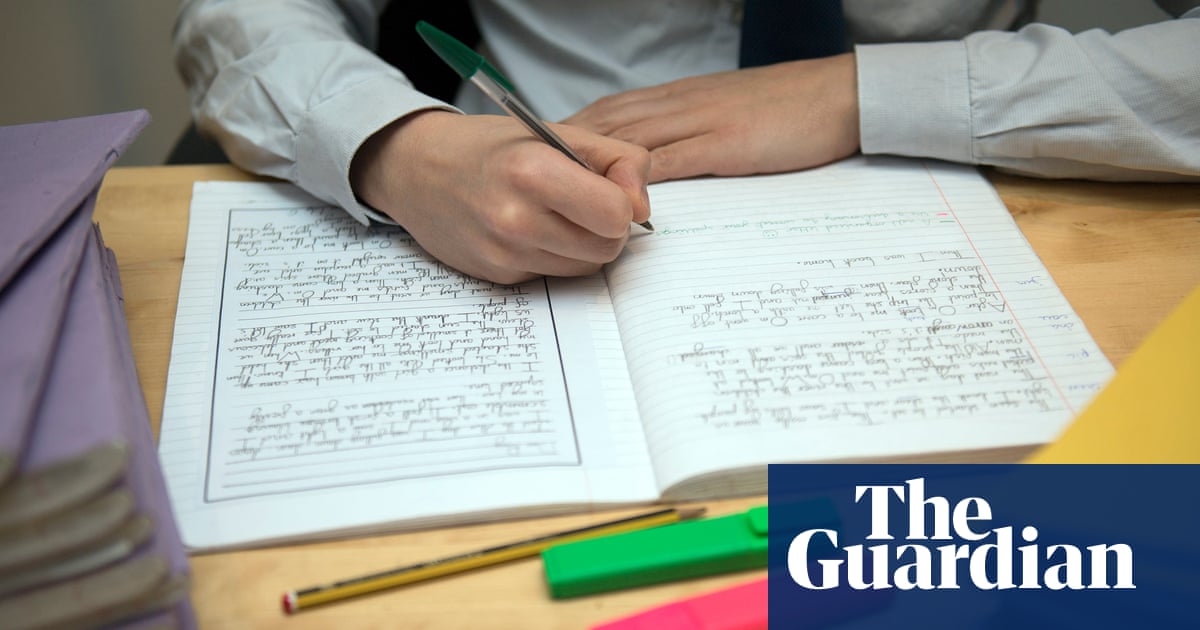In the run-up to her GCSEs this year, Ruby*, 16, from south London, turned to YouTube for learning because of staff shortages at her school. “We spent a lot of time going [online] and trying to find the person who most knew what they were talking about,” says her mother, Helen.
The teenager was left to teach herself some of the material for a final exam after a turbulent year of teachers quitting, non-specialists covering lessons, and classes being combined in a hall with a single teacher in charge of up to 60 pupils.
Students fared better in combined classes than with non-specialist cover teachers, her mother says. But the situation was far from ideal. “She appreciated the fact there was a specialist in the room, but the problem was you couldn’t ask any questions because of the sheer number of students.”
Still, Helen reckons her daughter is one of the lucky ones. “Her grade profile is 8s and 9s [equivalent to A*s and As under the old grading system]. She’s smart and can just get on with it. But most can’t. Some of her friends have given up – they say there’s no point as long as we just pass. These are students who are bright and should be aiming higher.”
Helen, 48, does not blame the school. “They’re always trying to do their best with what seems like a rubbish situation.”
A record 40,000 teachers in England – almost 9% of the total – resigned from state education last year, the latest workforce survey by the Department for Education (DfE) shows, while about 4,000 retired. Dozens of parents told the Guardian that their children’s education was suffering because of teachers being forced by vacancies to teach outside their specialism, and some said certain subjects were no longer offered at their school.


